


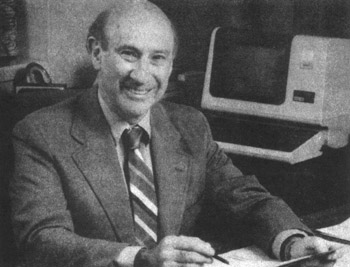
R. Pariser as depicted in IJQC 37, 319 (1990) 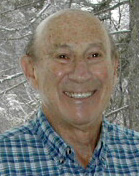
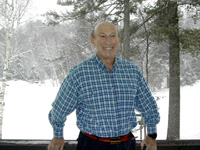
R. Pariser during winter 2001 in Vermont |
Rudolph Pariser was born in Harbin, China, in 1923
but became a naturalized citizen of the United States of America.
He received his B.Sc. degree from the University of California, Berkeley in 1944, then spent more than two years in the US Army and continued his education in 1947 towards a Ph.D. degree at the University of Minnesota where he obtained his Ph.D. degree in physical chemistry in 1950. Pariser spent most of his active life as a polymer chemist at DuPont - during his last ten years at DuPont he served as Research Director for Polymers and Advanced Materials Research in the Central Research Laboratory. He now heads his own company. He is best known for his work with Robert G. Parr on the method of molecular orbital computation now known (because it was co-developed by John A. Pople) as the Pariser-Parr-Pople, PPP- Method . ... [more CV details] ... |
|
Rudolph Pariser : On the Origins of the PPP Method. Int. J. Quant. Chem, 37, 319-325 (1990). Rudolph Pariser : Bob Parr - Teacher, Collaborator, Friend : A Personal View. Int. J. Quant. Chem, 49, 145 - 146 (1994). |

|

|
R. Pariser and R.G. Parr: A Semi-Empirical Theory of the Electronic Spectra and Electronic Structure of Complex Unsaturated Molecules. I. J. Chem. Phys. 21, 466-471 (1953). Submitted 1952. |
View it!
|
R. Pariser and R.G. Parr: A Semi-Empirical Theory of the Electronic Spectra and Electronic Structure of Complex Unsaturated Molecules. II. J. Chem. Phys. 21, 767-776 (1953). |
View it! | |
R. Pariser : An Improvement in the pi-Electron Approximation in LCAO MO Theory. J. Chem. Phys. 21, 568-569 (1953). |
View it, too! |
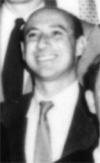 Pariser in 1955 at the Austin, TX, meeting |
Born in Harbin, China, Dr. Pariser received a BS in chemistry from the University of California, Berkeley in 1941 and a PhD in physical chemistry from the University of Minnesota in 1950. He is married to the former Margaret Louise Marsh. | 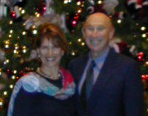 Pariser and wife Xmas 2001 |
